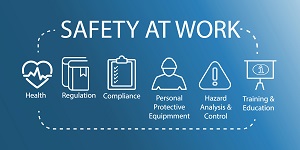There are many cooperative programs that allow businesses and organizations to work cooperatively with OSHA to help prevent fatalities, injuries, and illnesses in the workplace and at the job site.

OSHA’s Alliance Program enables the agency to develop voluntary, collaborative working relationships with organizations that are committed to workplace safety and health. Through the Alliance Program, OSHA works with organizations such as trade and professional associations, labor unions, educational institutions, community and faith-based groups, and government agencies to share information about OSHA’s initiative and compliance assistance resources with workers and employers and educate workers and employers about their rights and responsibilities.
OSHA’s Strategic Partnership Program (OSPP) provides the opportunity for OSHA to partner with employers, workers, professional or trade associations, labor organizations, and/or other interested stakeholders. Each OSHA Strategic Partnership establishes specific goals, strategies, and performance measures to improve worker safety and health.
OSHA Strategic Partnerships are unique agreements designed to encourage, assist, and recognize partner efforts to eliminate serious hazards and enhance workplace safety and health practices. Partnerships focus on improving safety and health in major corporations, government agencies, at large construction projects and private sector industries where OSHA has jurisdiction. Most OSHA Strategic Partnerships are based out of local OSHA Area or Regional Offices.

The Voluntary Protection Programs (VPP) recognize employers and workers in the private industry and federal agencies who have implemented effective safety and health management systems and maintain injury and illness rates below national Bureau of Labor Statistics averages for their respective industries.
In the Voluntary Protection Programs, management, labor, and OSHA establish cooperative relationships at workplaces that have implemented a comprehensive safety and health management system. VPP is OSHA's premiere recognition program designed to recognize worksites with robust safety programs that incorporate strong management commitment and meaningful, active employee involvement.
The OSHA Challenge Program provides interested employers and workers the opportunity to gain assistance in improving their safety and health management systems through mentoring, training, and progress tracking.
In the Challenge Program, administrators experienced in safety and health guide participants through a three-stage process to implement an effective system to prevent fatalities, injuries, and illnesses. After each stage completion, OSHA will provide Challenge participants with letters of recognition.

OSHA's On-Site Consultation Program offers no-cost and confidential occupational safety and health services to small- and medium-sized businesses, with priority given to high-hazard worksites. These on-site consultation services are separate from the OSHA enforcement department and your organization will not get penalties or citations, even if things at your company aren’t quite perfect.
If applicable, companies may even qualify for a one-year exemption from routine OSHA inspections by utilizing the free service. Your obligation is to make a commitment and follow through with correction serious workplace safety and health hazards.
Employers that have a full On-Site Consultation visit and meet other requirements may be recognized under the Safety and Health Achievement Recognition Program (SHARP) for their exemplary safety and health management systems. Worksites that receive SHARP recognition are exempt from programmed inspections during the period that the SHARP certification is valid.
Achieving SHARP status places an organization in an elite group of small businesses that maintain exemplary safety and health programs. To schedule an On-Site Consultation, visit and determine your eligibility for SHARP, contact your state's On-Site Consultation office.

If you are interested but aren’t sure which cooperative program might be the right fit for your organization, visit OSHA’s page Find a Cooperative Program that provides directed questions that can help you decide where to start.

.jpg)
